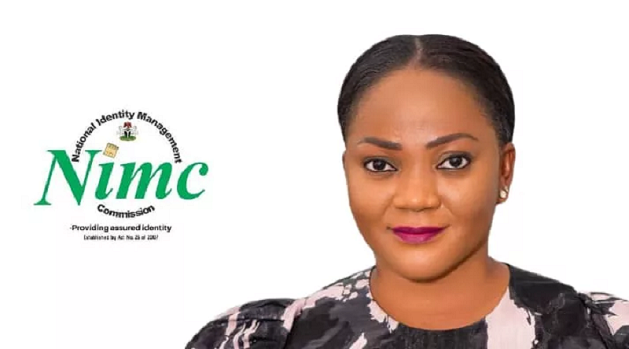Broadcasting
Why You Should Allocate Media Spend to Spotify

By Carla Harrison, East African Sales Manager, Ad Dynamo by Aleph
If I were to pick up your phone right now, there’s a very good chance that I’d find Spotify among your apps. It is, after all, the world’s most popular streaming service, with 433 million users (188 million of whom are paid subscribers) in 183 countries. Since its launch in 2008, it’s transformed the way the world listens to music and helped launch the careers of artists around the world.

And if you use Spotify, you’re probably also aware that it’s expanded from just music streaming into podcasting, with some 4 million podcast titles joining its library of 82 million songs. But did you know that it’s also a powerful advertising platform with a growing focus on the African continent?
Any brand that’s serious about expansion, particularly in high-growth markets such as Nigeria, simply cannot afford to ignore it.
The pros of radio, plus more
In order to understand what makes Spotify such an appealing platform for advertisers, it’s worth first reminding ourselves of the strengths offered by traditional radio. In general, for example, radio ads are more cost-effective than other forms. You can also get away with increased frequency, meaning that your message is more likely to stick.
Read Also:
Spotify offers all the benefits of radio advertising, plus more. With growing numbers of people listening to digital audio streaming every day, you’re guaranteed an active and engaged audience. At the same time, you’re also reaching them while they listen to what they love. And because Spotify’s targeting options are so advanced, your brand can reach specific people based on age, gender, music genre, and playlist. Unlike radio, Spotify guarantees 100% completed listens in its reporting. It can also provide metrics around which type of audience engaged with your ad and a companion banner which allows users to click through to a webpage.
The streaming service is an innovator in the advertising space too. Its 3D audio feature, for instance, allows brands to provide premium quality advertising through an immersive, dynamic, and sensory audio experience. As a result, listeners don’t just hear an ad, they feel it.
But Spotify offers more than just audio ads. It also allows brands to reinforce their messages with high-impact display and video ad formats. Spotify video ads are actually the best performing in the industry as they had to be built for viewability. The ads are 100% viewable, and 100% audible and Spotify only charges for 100% completion.
Making an impact in Africa
It’s also worth pointing out that Spotify is seeing significant levels of growth across Africa. While the streaming service has been available in South Africa since 2018, its real expansion into Africa only came in early 2021, when it launched in an additional 40 countries.
But just a year after launching in Nigeria, the number of artists streamed per user had grown by 60%, and Nigerian music fans had created 1.3 million user-generated playlists. Additionally, nearly 21 000 songs had been added to the platform, placing Nigeria as the country with the second most streams after Pakistan in the new markets, with Kenya third in the ranking.
That growth isn’t likely to slow down anytime soon either. According to Statista, music streaming revenues in Nigeria are expected to show an annual growth rate of 12.61% between 2022 and 2027. It’s also worth noting that penetration in the overall streaming market currently sits at just 4.1%. With an additional 35 million Nigerians set to come online by 2026 (all of whom will be hungry for the consumer experiences that come with affordable and ubiquitous access), Spotify looks primed for significant growth.
That comes with obvious growth benefits for advertisers, especially when you factor in that 39.6% of music streaming users are in the medium-income group. As Nigeria’s economy continues to grow, that income group will become larger and more valuable.
Partnering with the experts
Brands looking to utilise Spotify as a marketing platform don’t have to go in blind either. By working with experts that have specialist teams, they can get the most out of their campaigns. The right partners will also offer advertisers price transparency, ensuring that they get advertising on the platform at the most affordable rates.
In doing so, they can ensure that they always reach the right audiences at the right time, with the right message. Moreover, with Spotify they’re reaching people during the moments they love. And that’s always incredibly valuable for any marketer. Small wonder then that Spotify is seen as the most trusted ad platform among consumers. Factor in the brand safety it offers and you have a winning combination.
A culmination of factors
Ultimately then, Spotify represents the culmination of a number of factors that should be of interest to anyone with a media budget that needs to be spent. And as Africa, and Nigeria in particular, that combination of engaged active audiences, the ability to target specific audiences, and innovative advertising products will only become more important.
Broadcasting
Tim Akano Recounts 20-Year Growth, Media Support at NITRA End-of-Year Meet

Mr. Tim Akano, New Horizons Chief Executive Officer, took centre stage at the Nigerian Information Technology Reporters’ Association (NITRA) annual end-of-year meeting on Thursday, December 18, 2025, recounting the company’s remarkable growth and reaffirming free IT training for journalists.

Tim Akano, New Horizons Chief Executive Officer, in a group photograph with NITRA Members
Speaking directly to IT media members at the company’s training facility in Lagos, Akano acknowledged the critical role journalists played in supporting New Horizons during its formative years two decades ago.
He detailed how the firm evolved from a handful of staff to one of Africa’s leading ICT skills training organisations, now employing about 500 staff across multiple training centres nationwide.
Akano Spotlights Youth Training, University Partnerships
Akano highlighted that New Horizons has trained over 500,000 youths, particularly tertiary institution students, equipping them with practical IT skills essential for Nigeria’s digital economy.
He announced recent partnerships with universities, including a new agreement with Afe Babalola University, to scale hands-on training programmes for students.
“This growth would not have been possible without the media’s support in documenting our journey,” Akano stated, pledging continued free IT skills training for media members to remain competitive in the evolving digital landscape.
Reciprocal Support Defines Long-Standing Partnership
The venue hosting the NITRA meeting underscored Akano’s generosity; NITRA Secretary Chidiebere Nwankwo secured the free facility after contacting him—a gesture consistent with New Horizons hosting multiple association events and training IT journalists since its inception 20 years ago.
Participants shared personal testimonies of Akano’s support, including veteran journalist Aaron Ukodie, whose daughter—an Accounting graduate from the University of Johannesburg—received NYSC placement and IT scholarship at New Horizons.
The Guardian’s Yemi Adeyemi recounted Akano accommodating his editor’s child for mandatory IT training after other firms declined.
Members praised Akano’s commitment to human capital development as evidence of deep appreciation for the media community that chronicled New Horizons’ success over two decades.
Broadcasting
NIMC rolls out Pre-Enrolment Portal for seamless NIN registration

National Identity Management Commission (NIMC) has launched the NIMC Pre-Enrolment Portal to revolutionise the National Identification Number (NIN) enrolment process, enabling applicants within Nigeria and in the Diaspora to capture biodata online prior to biometric verification at enrolment centres.

NIMC
Accessible via penrol.nimc.gov.ng, the platform allows users to fill enrolment forms, schedule appointments, upload supporting documents securely, and manage personal details directly, thereby slashing congestion, minimising wait times, boosting data accuracy and enhancing overall service efficiency at centres nationwide.
NIMC Director-General and CEO, Engr. (Dr) Abisoye Coker-Odusote, spearheaded the initiative as part of the Commission’s technology-driven strategy to fortify institutional performance, aligning with President Bola Ahmed Tinubu’s Renewed Hope Agenda that emphasises digital transformation, efficient public service delivery and inclusive national development.
Dr Kayode Adegoke, Head of Corporate Communications, highlighted key benefits including simplified biodata handling, confidential data protection through robust security measures, reduced physical centre visits and heightened operational effectiveness, urging all prospective enrollees to adopt the portal for a faster, citizen-friendly experience.[conversation_history]
The move underscores NIMC’s mandate under the NIMC Act No. 23 of 2007 to manage the National Identity Database, issue NINs and foster a reliable digital identity ecosystem vital for national planning, with users advised to complete pre-enrolment online before heading to selected centres for biometrics.
Broadcasting
MultiChoice Talent Factory Calls for Entries Into Fully Funded Film Training Programme

MultiChoice Talent Factory (MTF), a Pan-African film and television training institution, has announced the opening of applications for its 2026 intake.

MultiChoice
The fully funded programme is open to African graduates aspiring to become directors, filmmakers, scriptwriters, producers and storytellers.
According to MultiChoice, the nine-month accredited curriculum combines online learning with intensive in-person training, and is designed to balance theoretical knowledge with practical immersion.
MTF academies are located in Kenya, Nigeria and Zambia, and serve aspiring filmmakers from 14 African countries. Since its inception in 2018, the initiative has trained 296 filmmakers, with graduates producing more than 42 movies aired on DStv, GOtv and Showmax platforms.
Organisers said alumni of the programme have gone on to establish over 50 production companies, while many continue to work within the MultiChoice ecosystem.
Graduates have also won accolades at the Africa Magic Viewers’ Choice Awards, Kalasha Awards, Uganda Film Festival and Women in Film Awards.
Applications for the 2026 intake close on Feb. 27, 2026. Interested candidates can visit https://apo-opa.co/3XW53oE for programme requirements.

 General News3 days ago
General News3 days agoJumia Kicks Off December Holiday Sale, Bringing Festive Deals to Shoppers Nationwide

 E-Financial3 days ago
E-Financial3 days agoAccess Holdings Shareholders Approved to Raise N40bn Capital Through Private Placement

 Broadcasting3 days ago
Broadcasting3 days agoNIMC rolls out Pre-Enrolment Portal for seamless NIN registration

 General News3 days ago
General News3 days agoDangote, Monopoly Power, and Political Economy of Failure

 General News3 days ago
General News3 days agoOAU, Baptist Day School Oluponna honour Akano with Distinguished Alumnus Awards

 General News22 hours ago
General News22 hours agoThe Mood Market to Light Up Lagos with a Rooftop Gifting, Food & Lifestyle Fair this Christmas

 News15 hours ago
News15 hours agoUS Okays $2.1Bn for Christian Healthcare in Nigeria

 E-Financial15 hours ago
E-Financial15 hours agoSterling Bank, Water.org, Sterling One Foundation Partner on WASH Loan for Millions

























